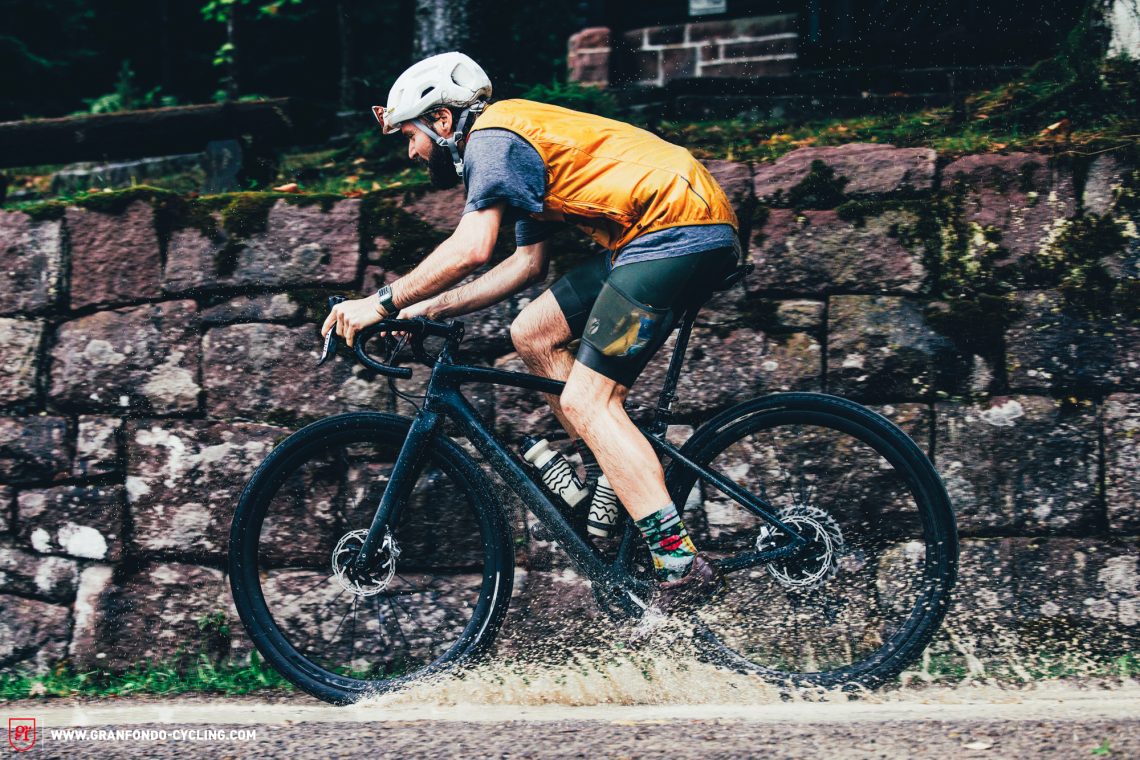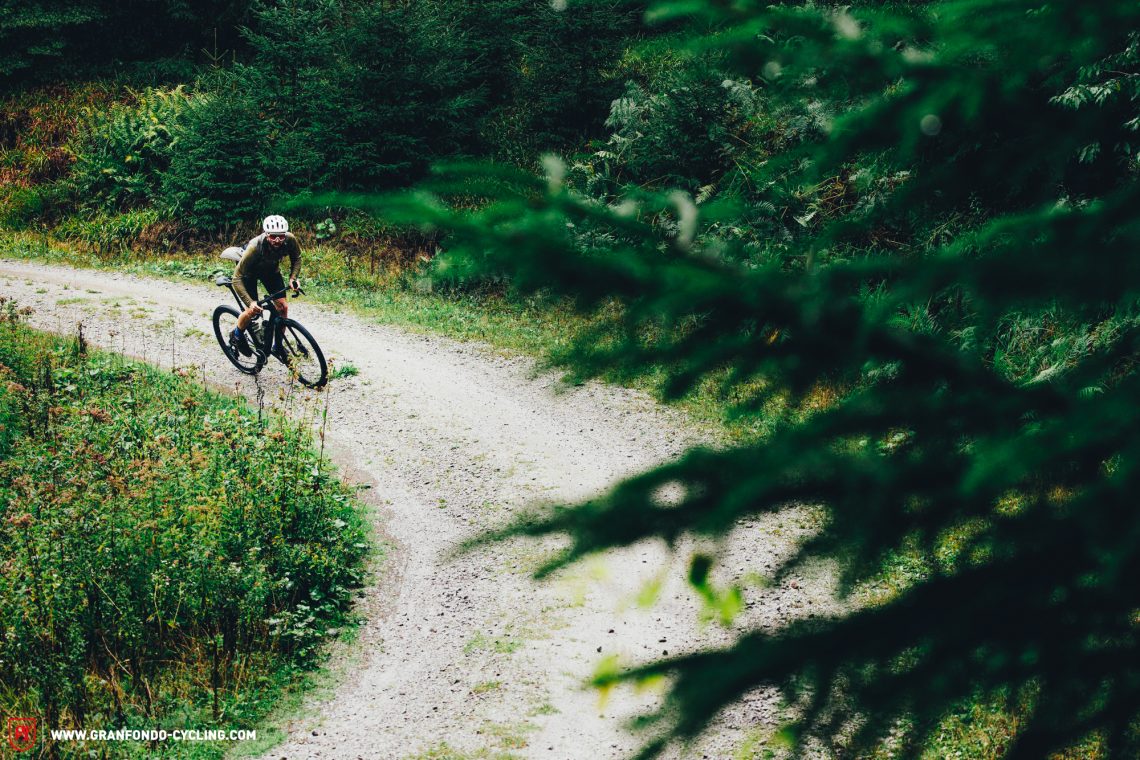Sorry Aladdin, your flying carpet has competition! With the new Diverge STR 2023 featuring the new Rear Future Shock, Specialized want to take comfort, efficiency and control to a new level while reimagining the full-suspension bike through gravel goggles. Not only does the result look exciting and different, but it also rides in the same way! After over a month of exclusive testing, we can tell you why the new technology behind the 2023 Specialized Diverge STR S-Works could be an excellent option for 80% of gravel riders!
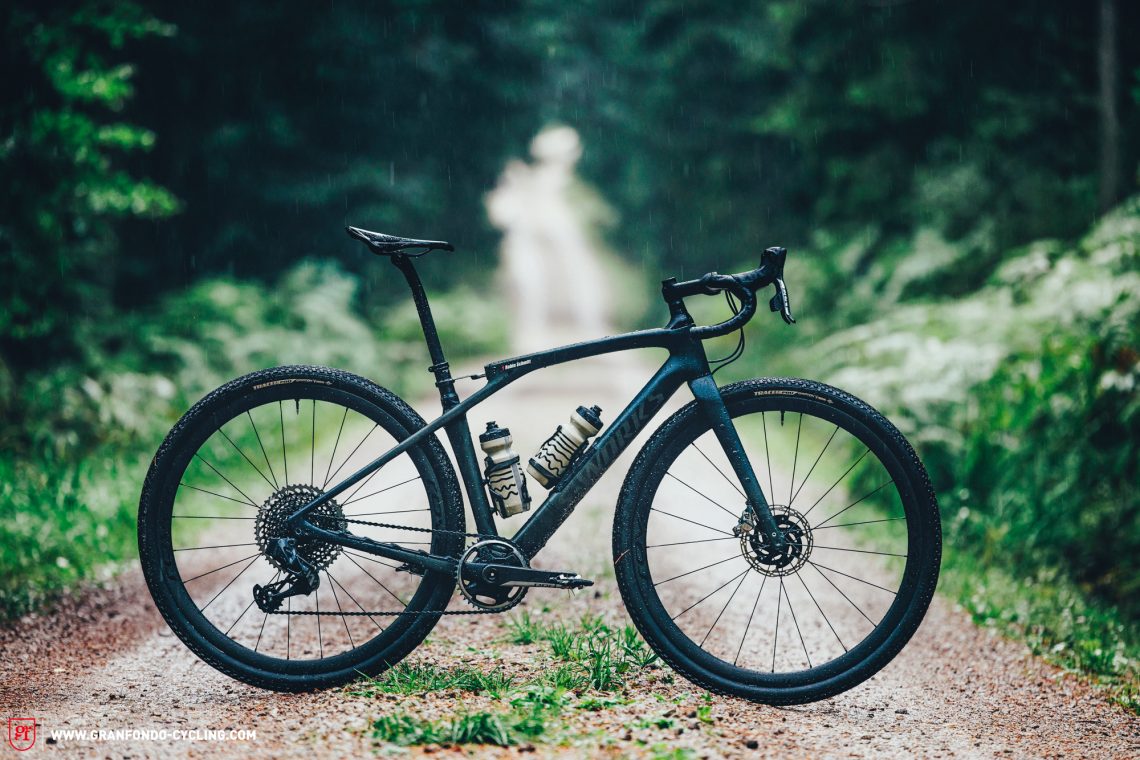
Not only does the right amount of comfort make you faster, but also more efficient. Over the past few years, nearly all brands in the dropbar world have understood and adopted this mantra. Increased comfort allows pros to pull through treacherous cobbled classics like Paris-Roubaix or epic 10-hour gravel races like Unbound, and at the same time allows us mere roadie-mortals to have a better time on virtually every ride – and have significantly more fun in the process! With the Future Shock system, Californian innovation guru Specialized has spent several years trying to reinterpret the concept of riding comfort,with varying degrees of success. Remember, the first generation of the Future Shock system was still undamped, providing suspension but very little control with consecutive, high speed hits.

With the new Diverge STR 2023, Specialized’s main goal was to improve comfort, control and performance without sacrificing efficiency or responsiveness. Simply put, the new Specialized Diverge STR prefers to be “as well as” rather than “either/or”. We’re very fond of this approach, because most gravel enthusiasts prefer a versatile bike and trusted companion for any adventure over a thoroughbred specialist that only suits a limited range of applications. Therefore, versatility is key with gravel bikes. But can Specialized deliver with the new Diverge? And at what price – apart from the eye-watering €15,000 price tag of the S-Works flagship model? We’ve had the exclusive opportunity to test the new Diverge STR at the official launch in Baiersbronn in the Black Forest as well as on on countless commutes on Stuttgart’s fine gravel and through the breathtaking mountain landscape of South Tyrol’s Dolomites.

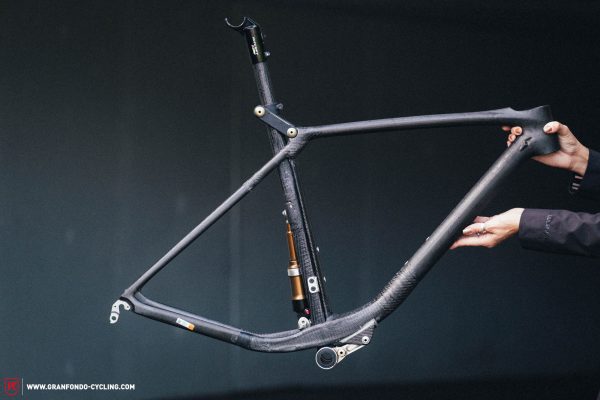
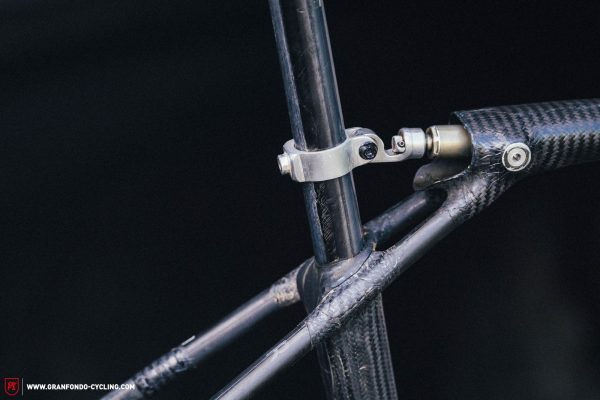

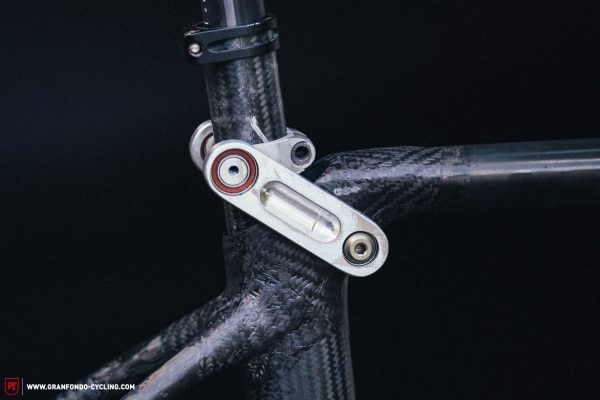
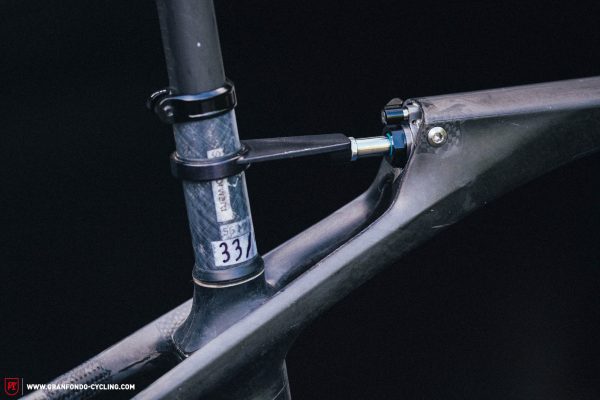
Specialized’s gravel full-susser is the brainchild of the manufacturer’s chief developer, Chris D’Aluisio, who had the idea during a rather unpleasant ride on a rough and heavily undulated road in Eureka Canyon, California. To make it to his destination safely and in a reasonably comfortable fashion, he had to continuously dodge potholes and bumps, while at the same time shifting his body around the bike to absorb impacts. And it was on this descent that he thought about developing a suspension system to suspend the rider, rather than the bike, as is common in the world MTBs world. Several prototypes and iterations later, Specialized’s new Rear Future Shock, which was designed to deliver uncompromised comfort, stands right in front of us – and quick spoiler: it’s nothing short of a rapid flying carpet with excellent sprinting characteristics.
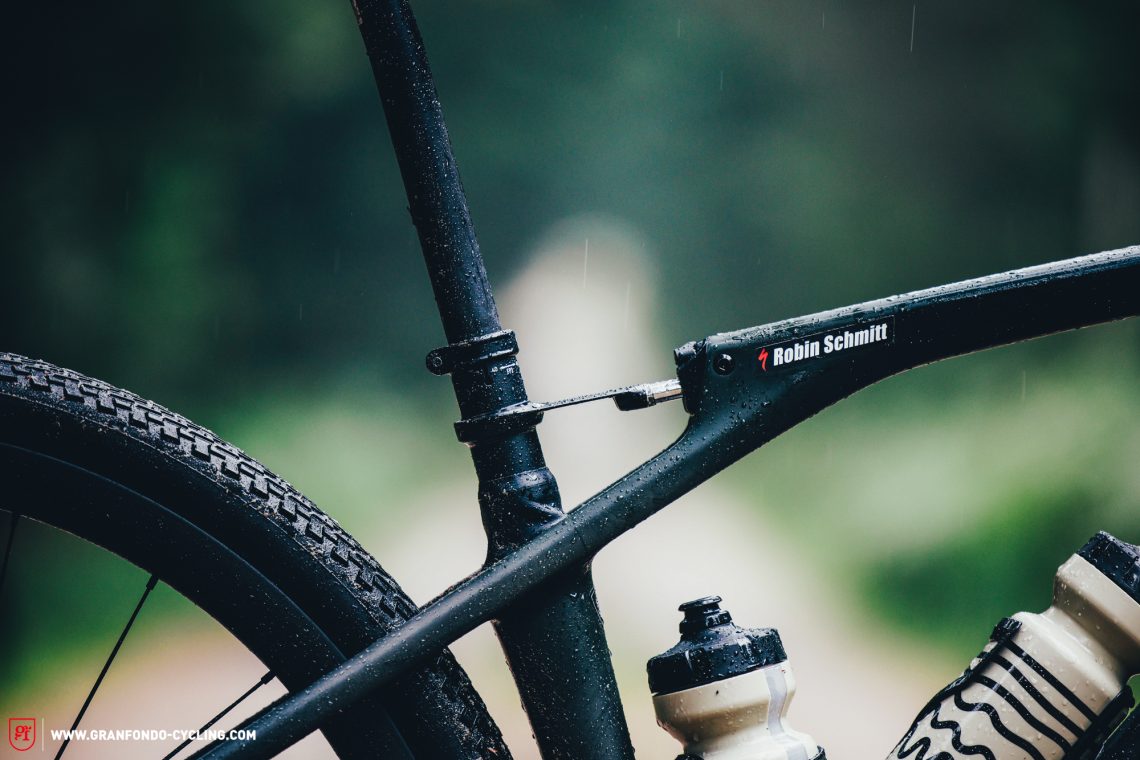


Specialized Diverge STR 2023: reinterpreting the full suspension bike.
Before delving deeper into the suspension concept of the new 2023 Diverge STR itself, we should explain what the aim of suspension is and how it can benefit a gravel bike. Gravel bikes are designed for both paved and unpaved roads (as well as the occasional foray into the unknown) and should therefore be able to handle uneven surfaces with rough gravel, bumps, roots and potholes. However, impacts come at the expense of both propulsion and traction, putting more strain on the rider and the materials, thus leading to physical fatigue more quickly. That’s why it’s important to smoothen impacts and filter them out in a controlled manner. When the suspension absorbs impacts, a bike inspires more confidence and doesn’t buck its rider off the saddle. But with the advantages also come disadvantages. For example, suspension elements will inevitably affect both the efficiency and weight of a gravel bike, while at the same time adding to its complexity. On top of that, conventional suspension components will have a negative effect on handling, because they alter the geometry of the bike – particularly the head angle and wheelbase. Needless, to say, this isn’t ideal, especially when riding on the road. Moreover, increasing complexity also means adding more components that can break and that require attention and regular servicing. That’s exactly why Specialized developed the Rear Future Shock, which is intended to drastically reduce the disadvantages of conventional MTB rear suspension while at the same time striking an optimal balance between on-road efficiency and off-road capability, thus ensuring that the advantages of the added suspension elements outweigh their disadvantages. As a result, the new Diverge S-Works weighs 400 g more than its predecessor and delivers a radically new riding experience, providing 20 mm of travel at the front and 30 mm at the rear to smooth out the ride.
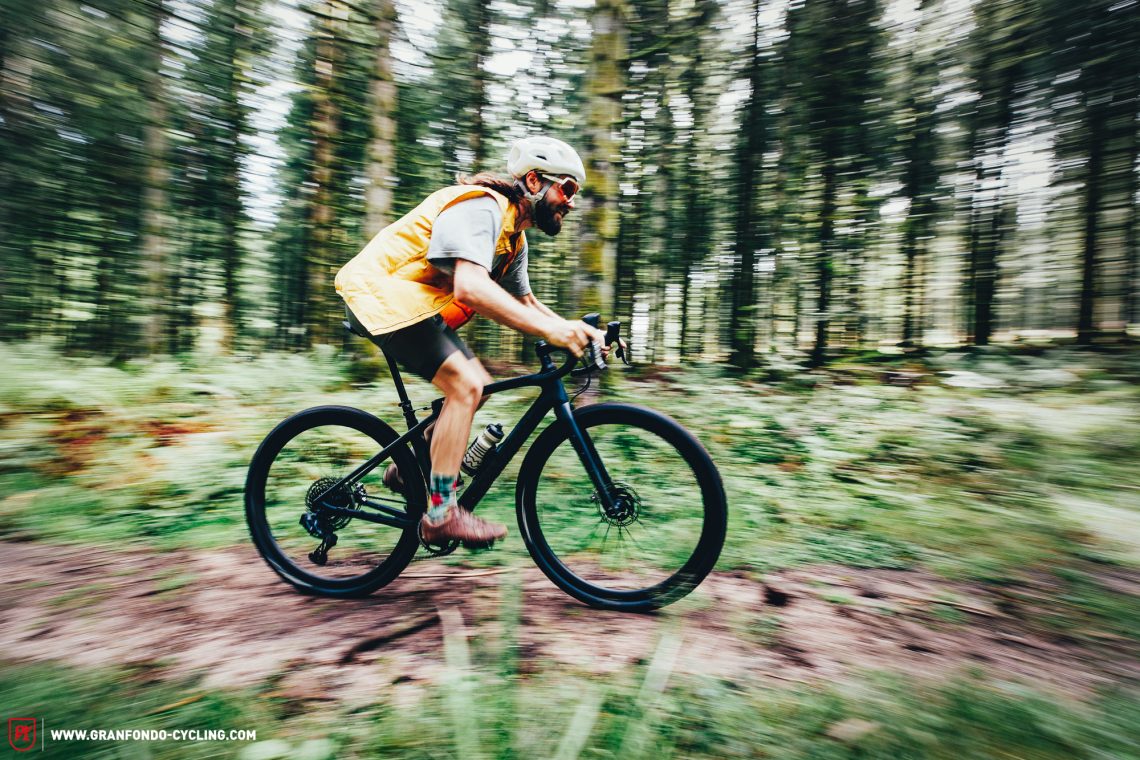
The Future Shock components of the 2023 Specialized Diverge STR – What distinguishes the new gravel suspension system from conventional MTB suspension systems?
The STR acronym stands for “suspend the rider”. The “suspend the rider, not the bike” slogan has been part of the furniture in Specialized’s marketing department for years and expresses their conviction that it’s more important to suspend the rider than the entire bike. With conventional MTB full-sussers, it’s crucial to minimise the unsprung mass of the bike in order to achieve the lowest possible moment of inertia and maximum traction. In mountain biking, both the obstacles and the impacts are larger than with gravel bikes, so it’s crucial that both wheels can move to overcome obstacles in order to provide a consistent level of traction. However, as the suspension compresses, the geometry of the bike changes, which alters both the handling and pedalling efficiency of the bike – a critical issue with gravel and road bikes.

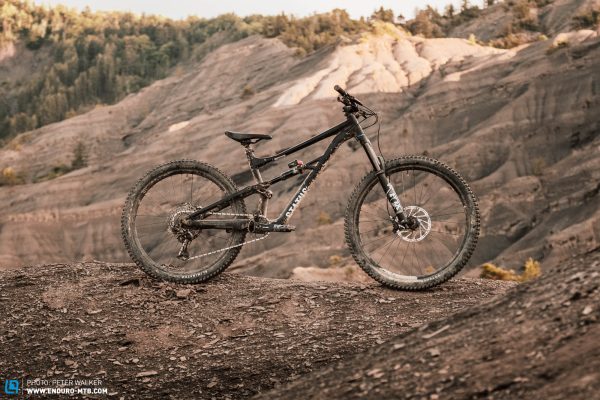
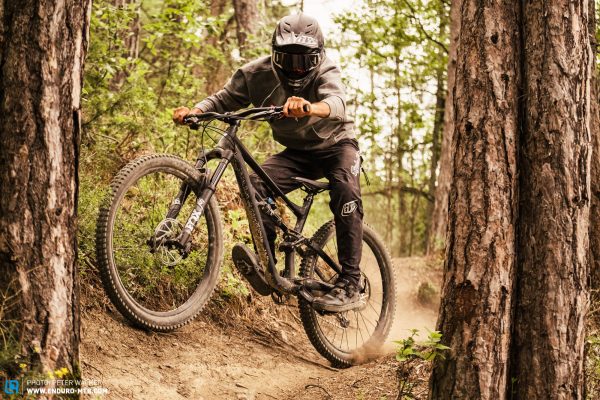
With the Specialized Diverge STR, almost the entire bike is unsprung and the (seated) rider constitutes the only suspended mass. As a result, the geometry remains unchanged throughout the ride, except for the seat angle and handlebar position. When sprinting out of the saddle, the Diverge accelerates like a classic gravel or road bike, without the rear suspension influencing its riding performance. We were truly impressed by how well the new 2023 Specialized Diverge STR 2023 combines out-of-the-saddle sprinting capabilities with flying carpet qualities – but more on this later!
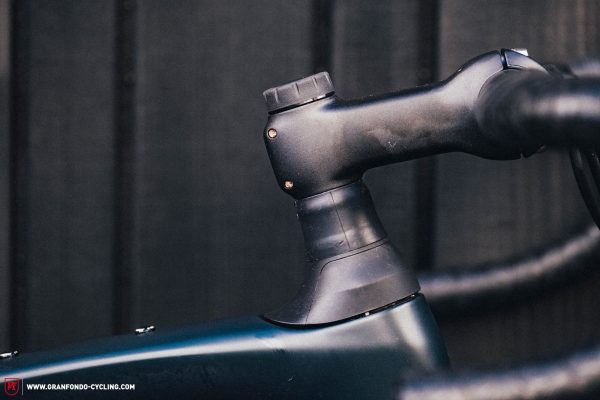

Like the current Diverge and Roubaix models, the new Diverge STR employs Specialized’s Future Shock 2.0 system up front, which provides 20 mm travel, allowing the cockpit to move vertically to absorb impacts and vibrations from the ground. Unlike conventional MTB suspension forks, however, it doesn’t have any influence on the handling of the bike. At the rear, Specialized’s proprietary Rear Future Shock generates around 30 mm of travel and can be adjusted to suit the rider’s weight, height and riding style using a clever system of interchangeable seat tubes called frame post (FP). The damper in the top tube can be adjusted while riding using a 3-stage compression lever, while the rebound speed can be changed with an Allen key on the underside of the top tube. Moreover, gravity-oriented gravel riders can further customise their Diverge by running a short-travel 27.2 mm dropper post like the RockShox Reverb AXS XPLR post with up to 75 mm travel. Longer-travel, MTB-specific dropper posts are usually available in sizes 30.9 mm upwards and are therefore not compatible with the Diverge’s skinny seat tube.

How the Rear Future Shock of the new Specialized Diverge STR 2023 works
Not only did Specialized reinterpret the idea of full-suspension bikes, but also came up with a whole new rear suspension concept, which uses the seat tube as a spring, attached to a damper in the top tube.. Comparatively, a classic MTB shock integrates the spring and damping together. An air chamber or coil spring with a predefined spring rate provides support, while a hydraulic damper regulates both the compression stage and rebound and, depending on the design, allows for different adjustment options such as low/high-speed rebound and low/high-speed compression.
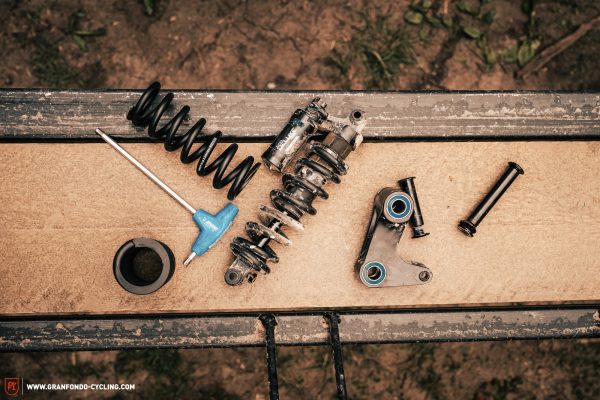
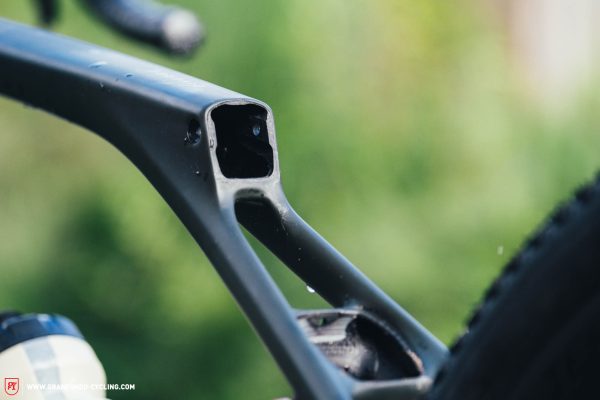
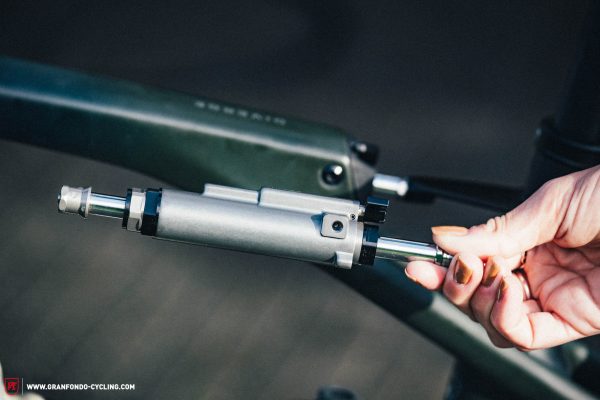
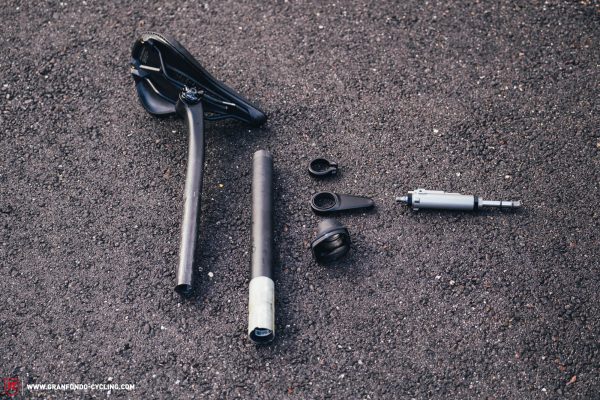
While the Specialized Rear Future Shock differs both in construction and looks from a conventional shock, it consists of the same elements. Simply put, the interchangeable seat tube is the spring of the Diverge’s suspension system. Unlike with conventional shocks, the spring stiffness isn’t determined by the pressure in the air chamber or the spring rate of a coil, but by the interchangeable frame post that accommodates the seat post. The frame post is connected to a cylinder in the top tube which is solely responsible for the damping. The seat post is connected with the damping unit via an alloy bracket, enabling controlled compression and rebound. The damper is based on a pull-shock design, so the compression damping controls the speed that the seatpost can flex back away from the frame, and the rebound damping controls the return.
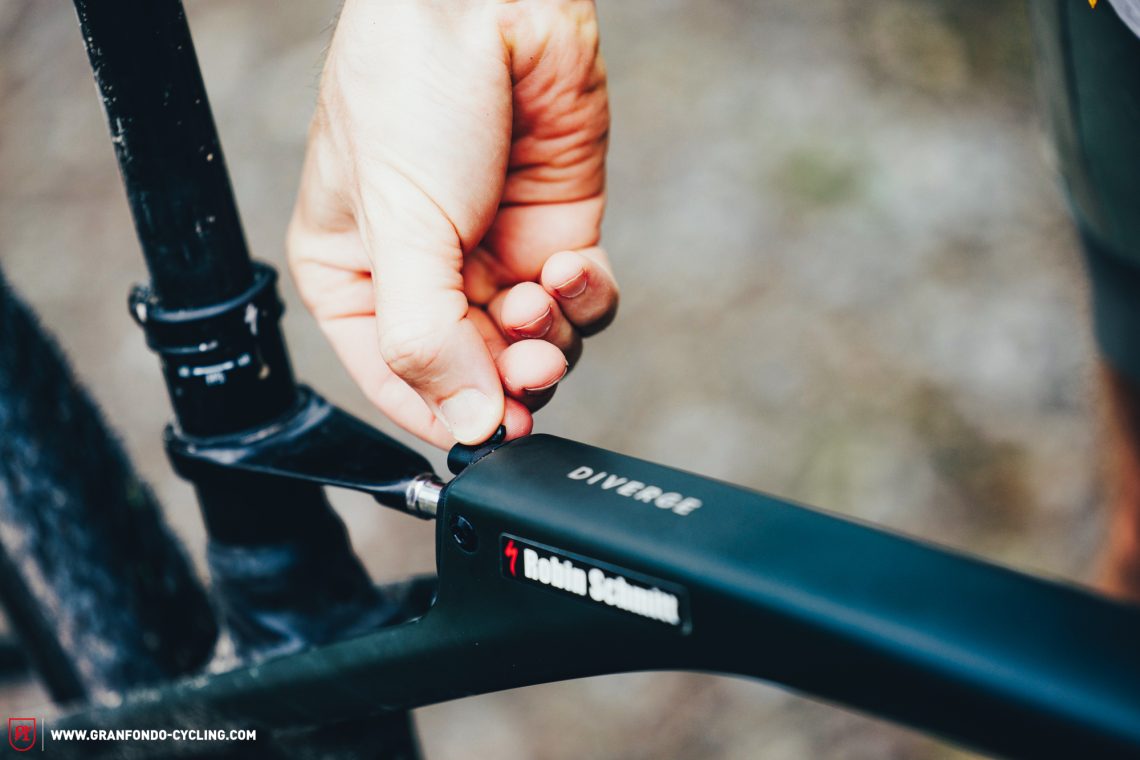
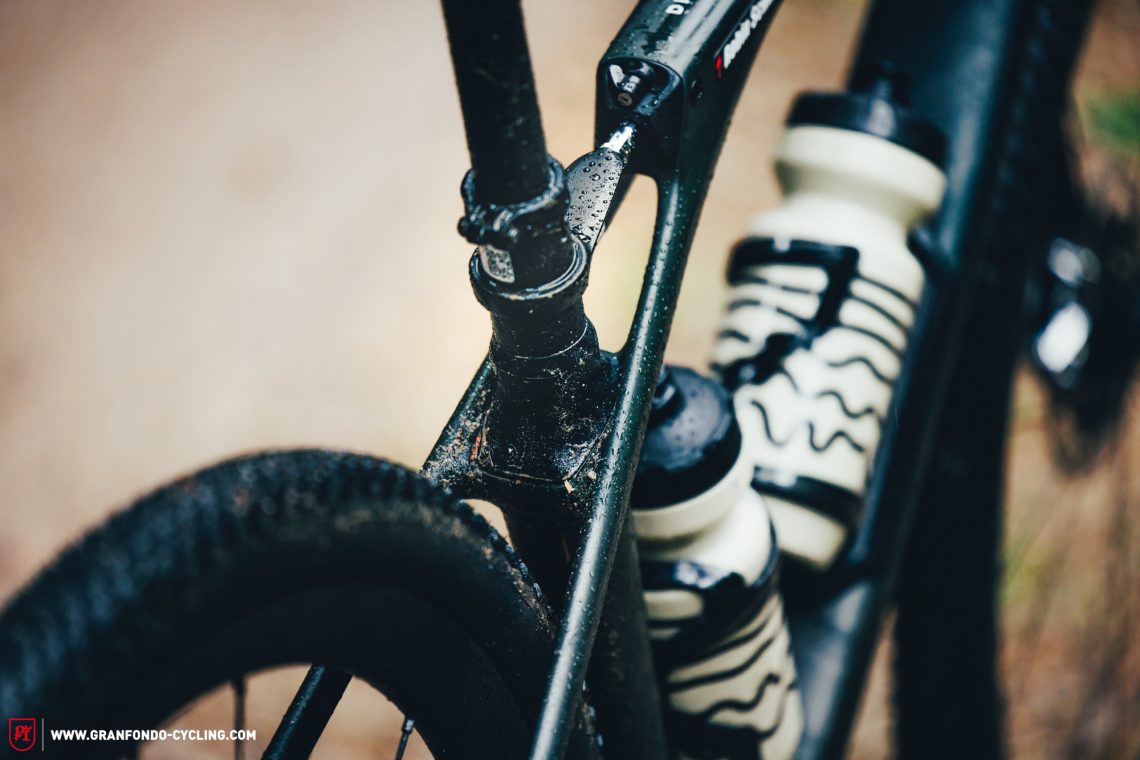
Ultimately, Chris D’Aluisio’s Rear Future Shock relies on the same principles as a conventional MTB shock, just with a new approach – namely the replaceable frame post, which doubles as a spring. All in all, however, the basic principle is the same!
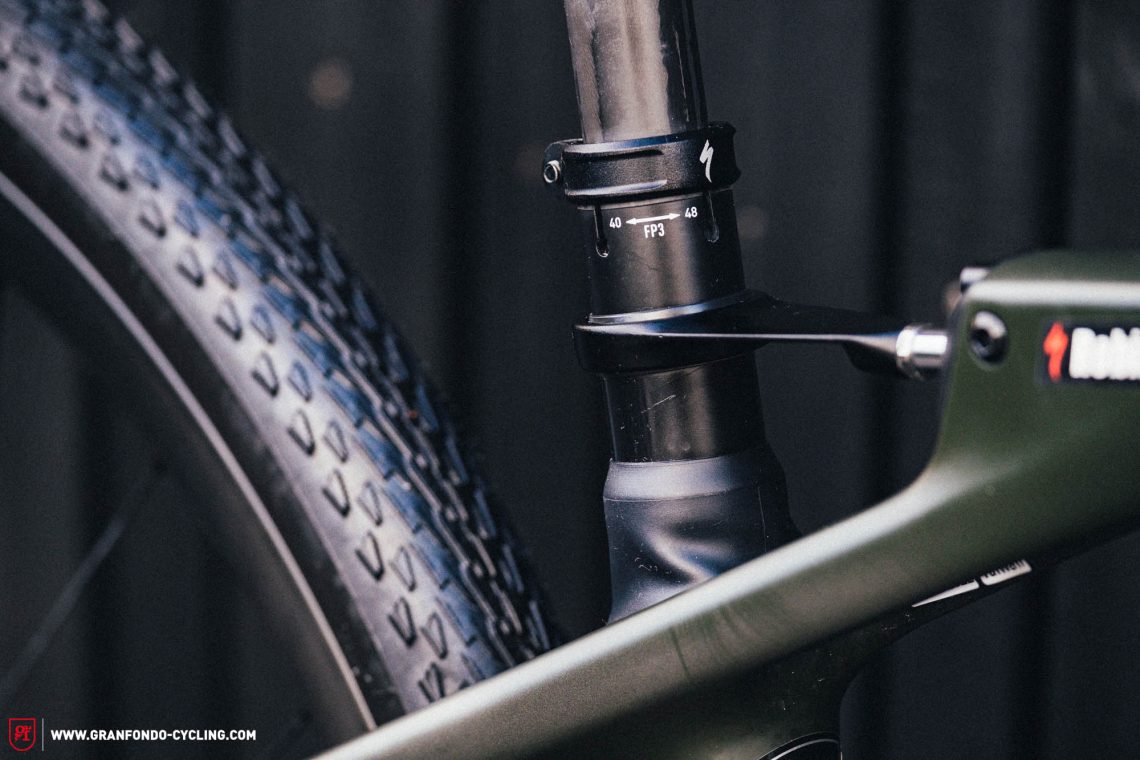
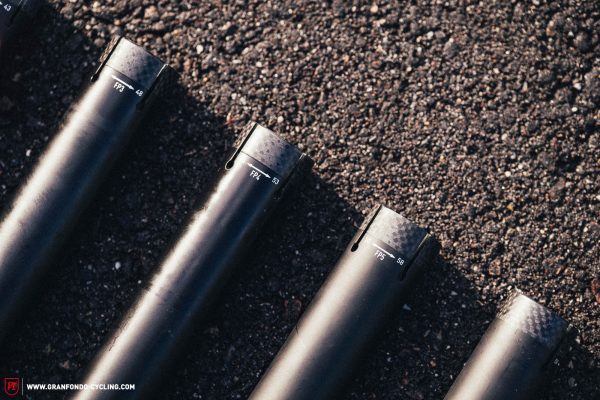
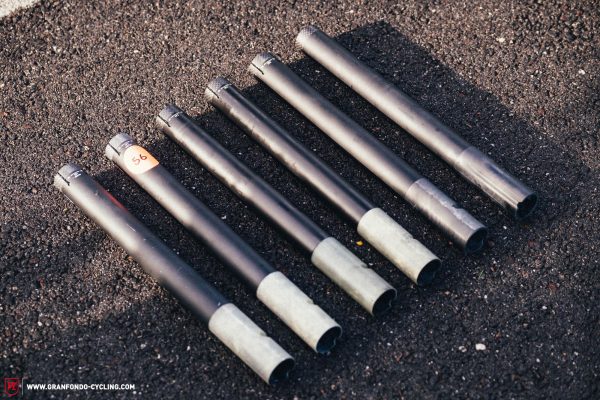
In order to ensure maximum adjustability, Specialized offer 9 interchangeable frame posts with different degrees of stiffness. These are marked with a number and FP acronym, which stands for frame post. Each frame post can be installed in two different orientations, which provide different degrees of stiffness, and in turn different spring rates. The right choice of frame post depends on several factors including frame size, rider weight, saddle position and pedalling style. The new Diverge comes standard with 2 interchangeable frame post, which, according to Specialized, should suit the needs of most of the riders. You can change the frame post yourself following Specialized’s instructions. The process is pretty straight forward and takes around 10 minutes – although there are a few tricks you should be aware of first. However, if you aren’t confident installing the frame post by yourself, you should ask your trusted Specialized dealer to deal with the installation and fine tuning of the system. One issue we had with the frame post that Specialized delivers as standard with our frame size is that generic size indications do not always take into account other factors – there can be significant differences in weight between a super slim roadie and a musclier, more robust rider, even if they’re equally tall. Therefore, make sure you choose the frame post stiffness according to your own needs and requirements.
Why didn’t Specialized just use an air shock with the new 2023 Diverge STR?
In a nutshell, an air shock would add too much weight and complexity to a drop bar frame. Moreover, according to Specialized, an air shock wouldn’t offer the same small bump sensitivity and requires more frequent servicing. Speaking of which: the damper of the Rear Future Shock requires a service every 2 years, but this is more expensive than the damper itself, so Specialized replaces the whole thing altogether. That said, the first shock replacement should fall within the statutory 2-year warranty period. And while this might not be the most sustainable approach, with high-end performance products, performance is often given priority over sustainability – especially in the drop-bar segment. For comparison’s sake, a high-end mountain bike shock should be serviced every 10 to 20 riding hours – but that’s according to the manufacturer’s recommendations, which only a handful of hardcore geeks will follow!
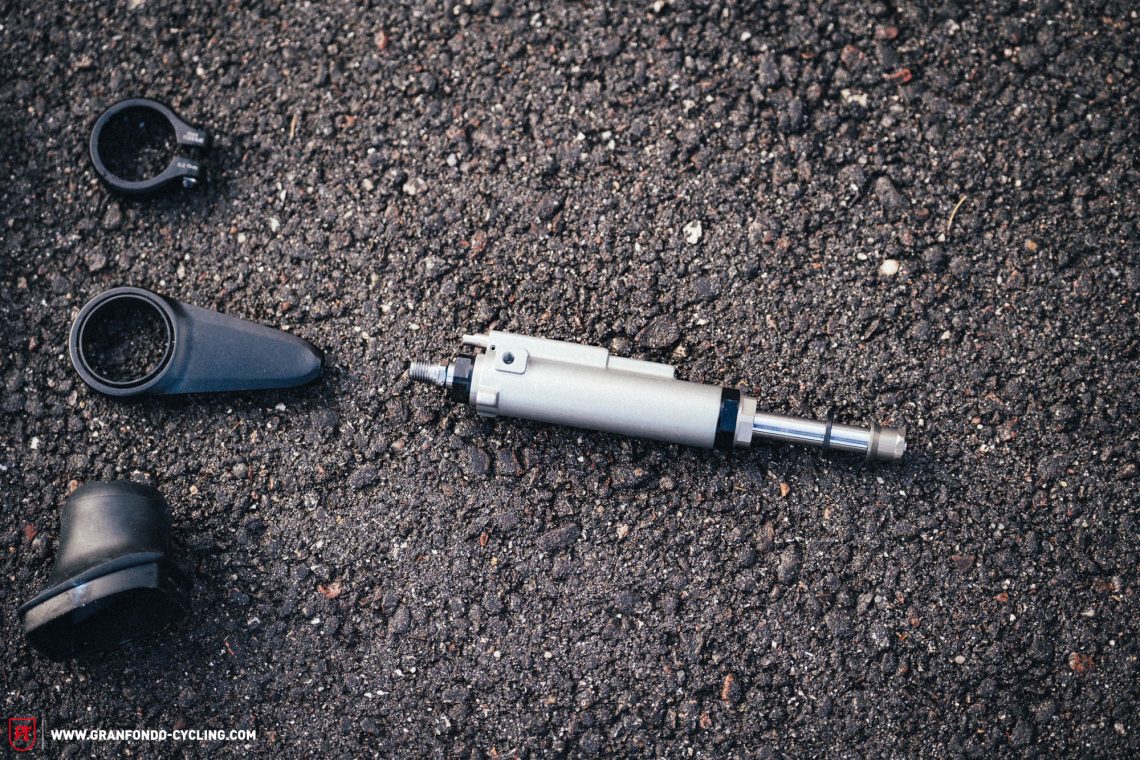
Why complicate your life when there’s an easier option – or is there?
The sceptics amongst us might ask themselves: why all the effort, what’s wrong with a suspension seat post? Specialized’s aim was to create an adjustable, dampened suspension system that keeps the rider’s centre of gravity as constant as possible. Here, we’ll show you different concepts and approaches from different manufacturers and competing products, each of which has its pros and cons.
Canyon’s S25 VCLS 2.0 CF seatpost
For the S25 VCLS seat post, German direct-sales brand Canyon relies on carbon leaf spring technology. The patented design generates up to 20 mm travel and is claimed to be 100% maintenance-free. However, the degree of stiffness can’t be tuned and changes noticeably with increasing saddle height. In addition, the seatpost movement isn’t damped and tends to bounce with impacts. With MTB full-suspension bikes, we talk about wheel path, which is the exact line that the axle of the rear wheel follows during a full compression of the suspension. With bikes that rely on a flexing seat post instead of conventional suspension components, the post flexes in a sloping curve that changes the saddle angle over the travel, which makes you feel as if you were slipping backwards off the saddle – although this sensation can vary in intensity depending on the seatpost and bike. To counteract this, Canyon rely on a two-part design that ensures a very low degree of saddle tilt.
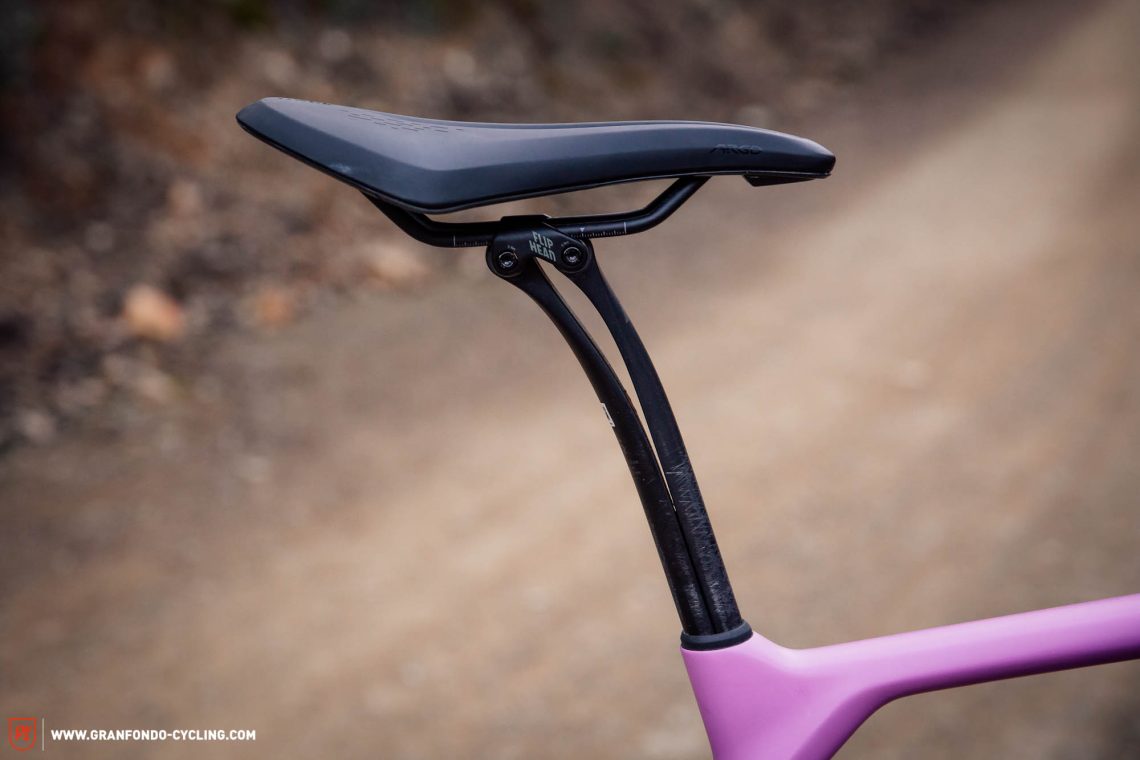
How does it differ from Trek’s IsoSpeed?
Just like the Rear Future Shock, Trek’s IsoSpeed has gone through several evolutionary stages and the latest iteration has been simplified for the sake of a lower system weight. While the previous version still allowed you to adjust the system to the rider’s weight and riding style to a certain degree, the current IsoSpeed system forgoes any kind of adjustments. The saddle tilt curve is significantly steeper compared to the new Diverge, because the pivot point is significantly higher than that of the latest Specialized offspring. As a result, the Trek has a more pronounced saddle tilt.
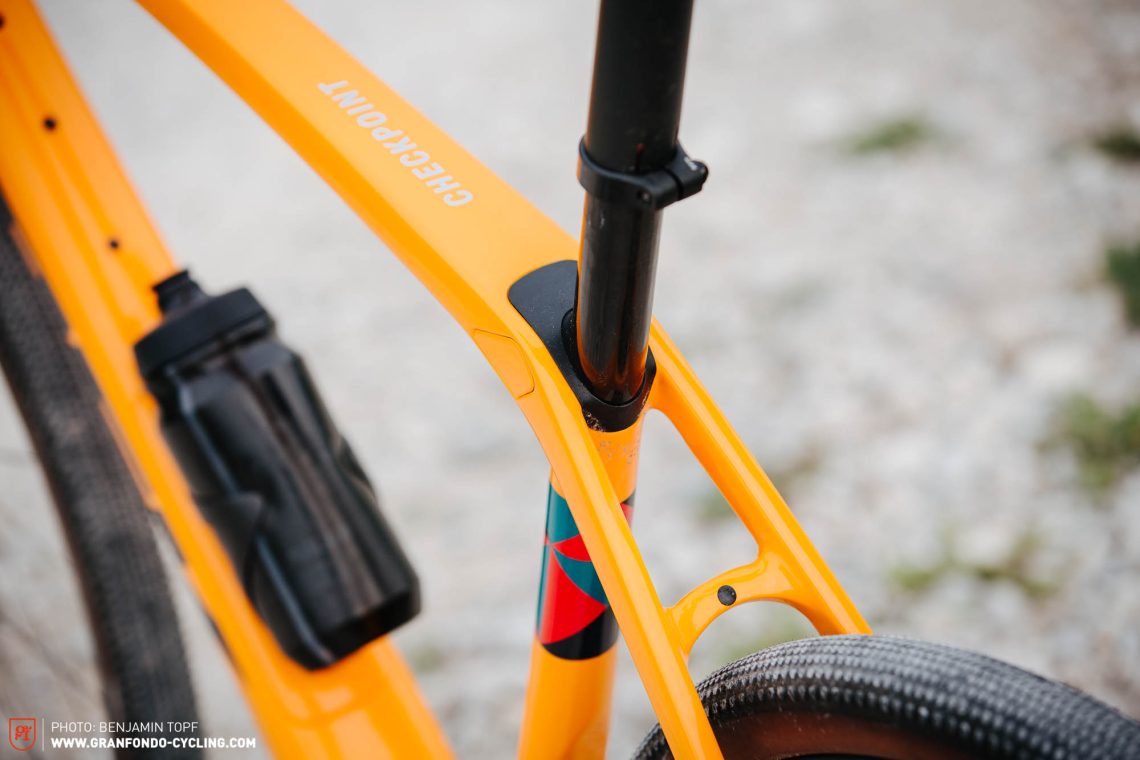
Why not simply use more voluminous tires?
More volume and less air pressure is a safe formula to follow when you want to improve comfort and, depending on the surface, traction. However, this combination also calls for compromises, because low air pressures only tend to work well on one type of surface, improving comfort off-road, but also making for vague handling on tarmac. In addition, large-volume tires feel squirmier on deep and loose gravel.
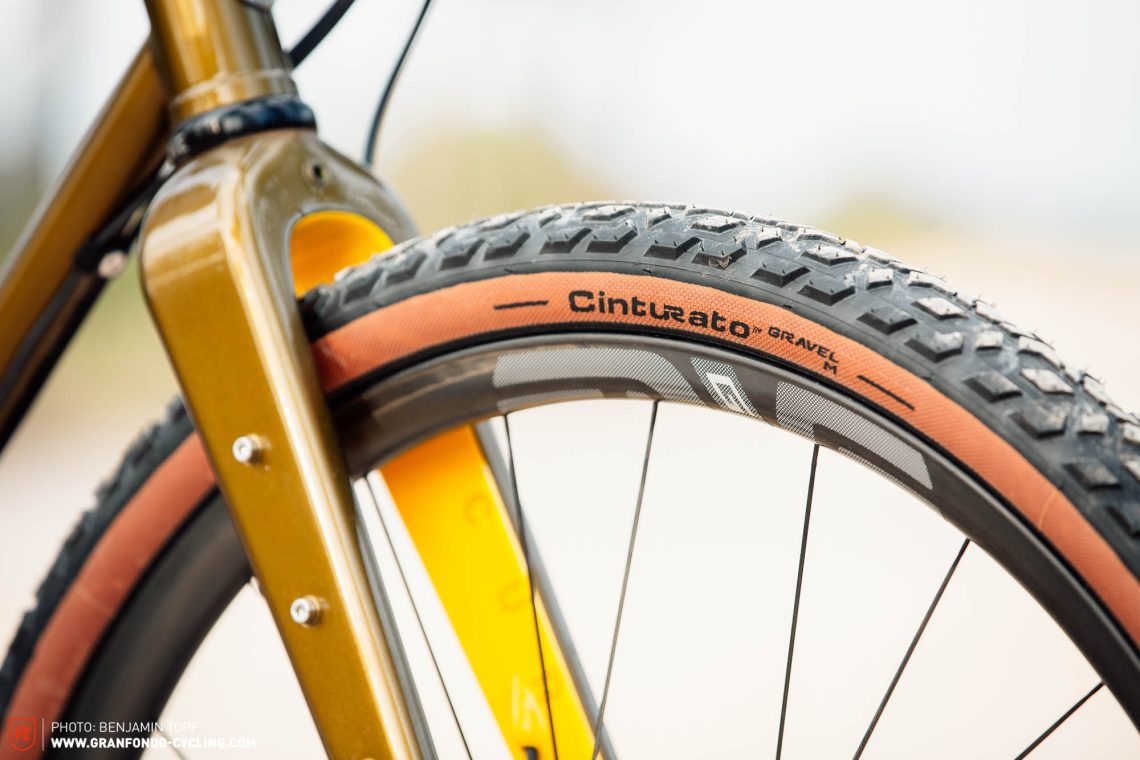
Why not simply use more voluminous tires?
More volume and less air pressure is a safe formula to follow when you want to improve comfort and, depending on the surface, traction. However, this combination also calls for compromises, because low air pressures only tend to work well on one type of surface, improving comfort off-road, but also making for vague handling on tarmac. In addition, large-volume tires feel squirmier on deep and loose gravel.
Is the Specialized Rear Future Shock also suitable for bikepacking?
Are you planning to embark on longer rides with your Specialized Diverge STR 2023? Go ahead and feel free to attach a big bikepacking bag to the saddle. We recommend choosing an interchangeable frame post that allows you to ride with a softer spring rate on a normal day out in the saddle and turning the tube by 90° to increase the spring rate when you ride with bikepacking bags.

The new Specialized Diverge STR 2023 in detail – weight, design, SWAT and more clever details
The Specialized Diverge STR 2023 stands out from the crowd, both for its innovative technical features and the polarising look: the split top tube gives way to the damper, making sure you’re at the centre of attention on your next group ride! For the frame of the S-Works Diverge STR 2023 and Diverge STR Pro 2023, Specialized rely on their high-quality FACT 11r carbon fibres. At 1100 g, the frame of the new S-Works Diverge is only 100 g heavier than its predecessor. Including the damper and mounting hardware, the Diverge STR frameset is just 400 g heavier than the conventional Diverge frameset.

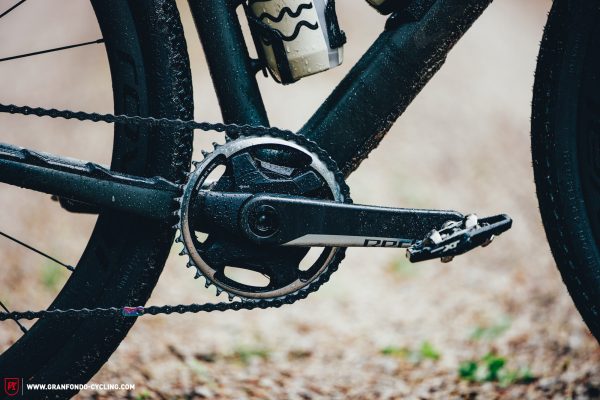

The trend towards 1x drivetrains is clearly rising, which becomes even more evident when you realise that Specialized forgo a front derailleur mount altogether. The frame of the Diverge STR can accommodate tires up to 700 x 47 mm, or 2.1” on 650B wheels. Specialized also integrated their proprietary and very practical SWAT box into the down tube of the bike, allowing you to stow away smaller trail essentials such as a spare tube, mini tool, a packable jacket or even a snack or a pack of gummy bears. It makes perfect sense to store items in the downtube rather than in a conventional saddle bag or jersey pocket, because the weight is distributed more evenly. If you want to carry more stuff, there are mounting points for carriers on the fork and top tube of the Diverge STR.
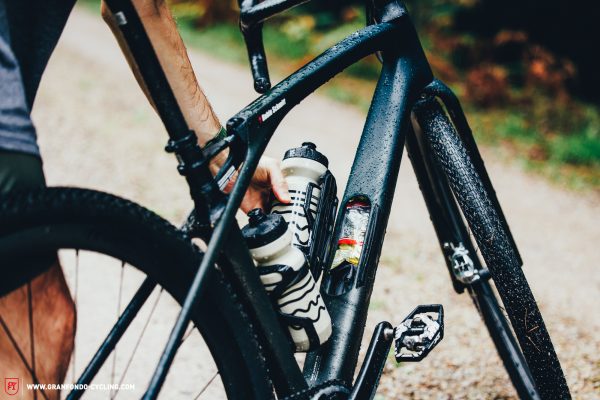

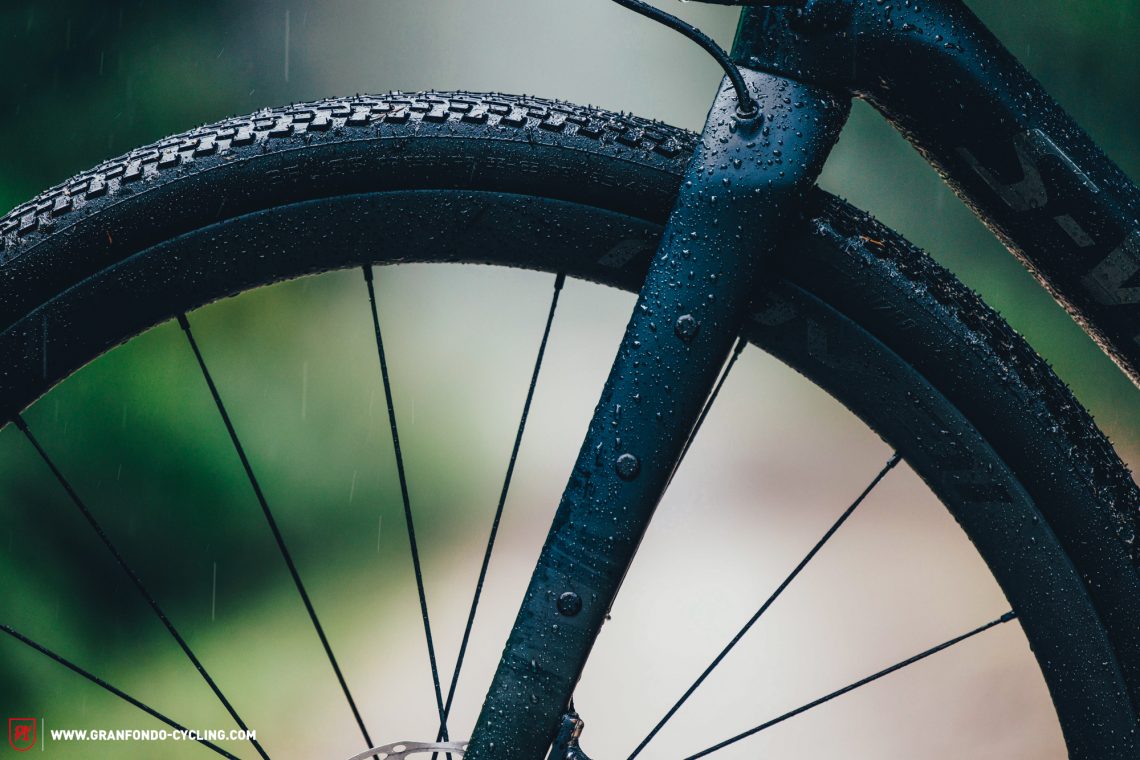
Our Specialized S-Works Diverge STR test bike comes equipped with a wireless 1×12 SRAM XX1 Eagle AXS drivetrain, which was developed specifically for XC mountain bikes but is becoming increasingly popular among progressive gravel bikes. The 10-50T cassette is paired with a 40T chainring mounted on SRAM RED 1 AXS cranks that come with Quarq power metre. SRAM also supply the brakes, combining high-end SRAM RED eTap AXS stoppers with 160mm rotors front and rear. For the wheels and tires, Specialized rely on their in-house products, pairing two 700 x 42 mm Specialized Tracer Pro 2BR tires with a Roval Terra CLX carbon wheelset with 25 mm inner width.
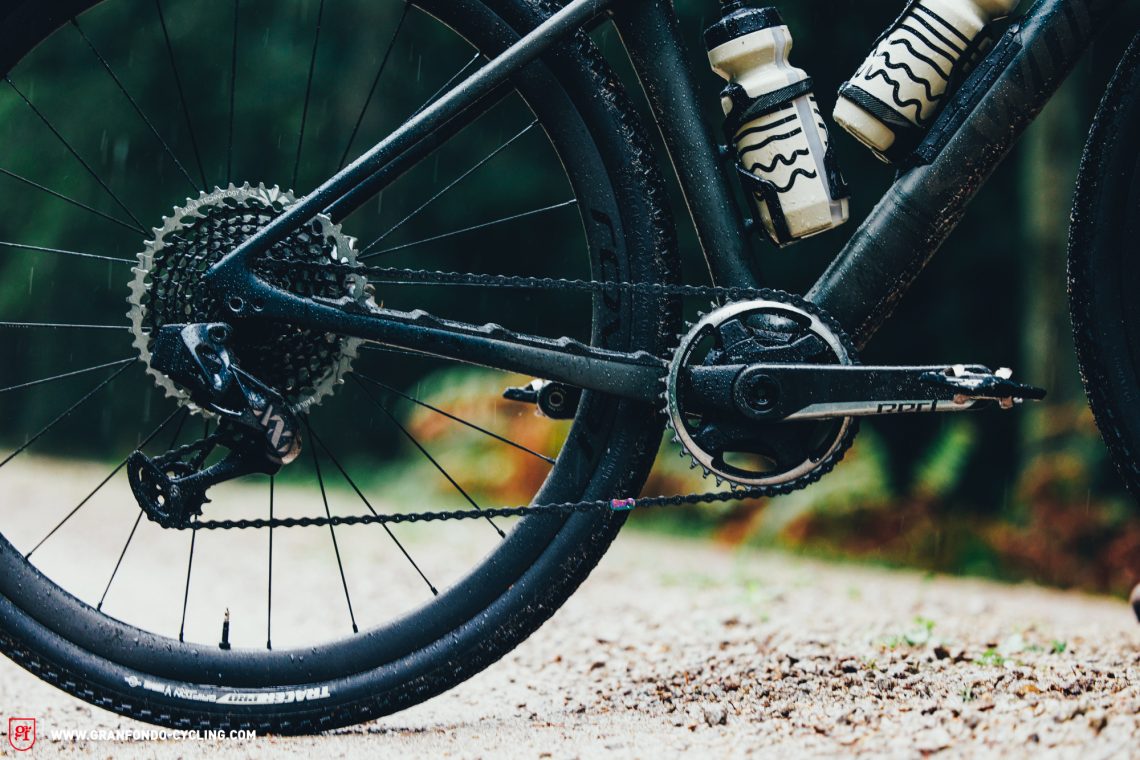
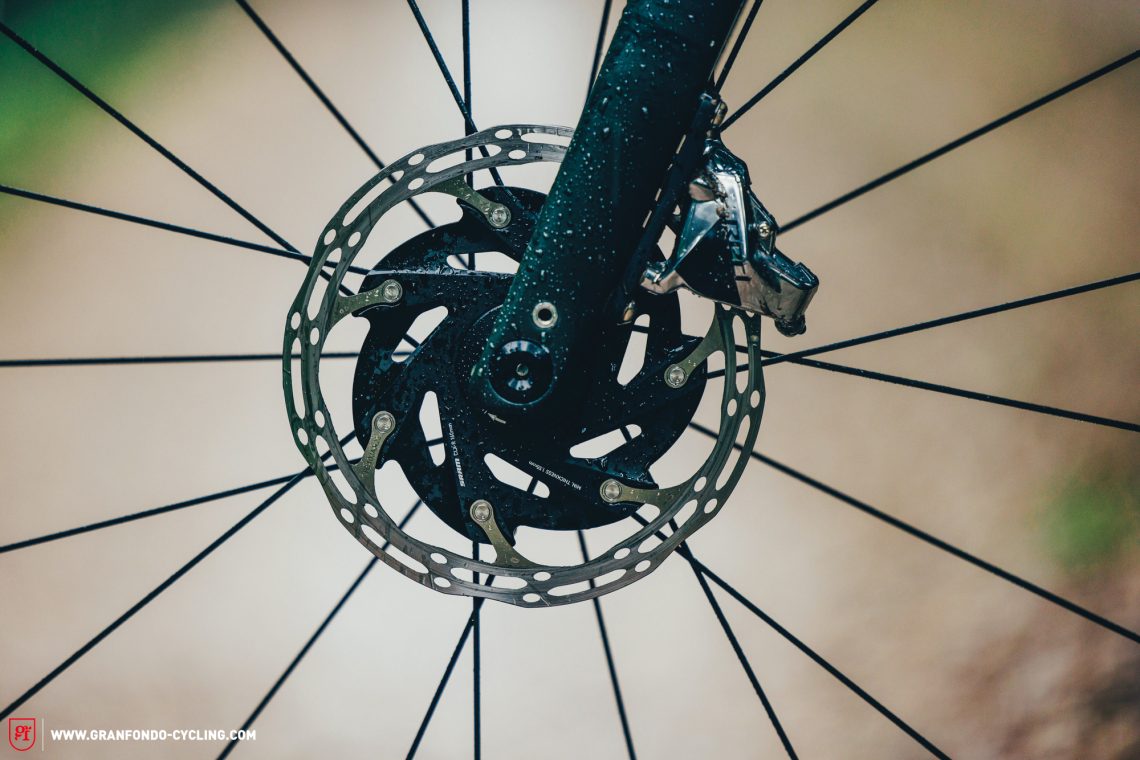

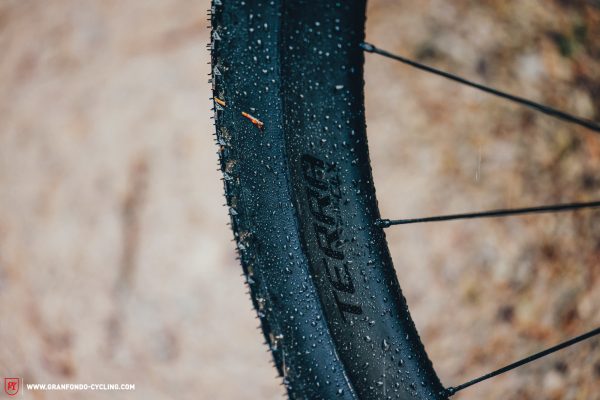
The geometry of the new Specialized Diverge STR 2023
The Specialized Diverge STR 2023 relies on a modern gravel geometry with a longer reach. While the reach and stack height have remained unchanged from previous Diverge models, chainstay length has increased from 425 to 429 mm. The seat angle has steepened up by 0.5° to compensate for the sag of the Rear Future Shock.
| Size | 49 | 52 | 54 | 56 | 58 | 61 |
|---|---|---|---|---|---|---|
| Seat tube | 390 mm | 430 mm | 470 mm | 500 mm | 530 mm | 560 mm |
| Top tube | 527 mm | 540 mm | 556 mm | 570 mm | 586 mm | 602 mm |
| Head tube | 100 mm | 100 mm | 115 mm | 130 mm | 155 mm | 182 mm |
| Head tube angle | 70° | 70.5° | 71.25° | 71.75° | 71.75° | 72.75° |
| Sitzwinkel | 74.5° | 74.25° | 74° | 74° | 74° | 74° |
| Chainstay | 429 mm | 429 mm | 429 mm | 429 mm | 429 mm | 429 mm |
| BB Drop | 80 mm | 85 mm | 85 mm | 85 mm | 85 mm | 85 mm |
| Wheelbase | 1.023mm | 1.027 mm | 1.034 mm | 1.044 mm | 1.060 mm | 1.078 mm |
| Reach | 365 mm | 374 mm | 383 mm | 392 mm | 401 mm | 410 mm |
| Stack | 569 mm | 576 mm | 593 mm | 609 mm | 633 mm | 659 mm |
Specialized Diverge STR 2023 – Models and prices
Alongside the €15,000 S-Works model, Specialized offer two more versions of the Diverge STR 2023, which all feature a carbon frame. The Diverge STR Expert retails at €7,500 and relies on a FACT carbon frame, constituting the gateway to the Diverge STR carbon dimension. The Expert entry level comes equipped with SRAM Rival eTap AXS disc brakes and an electronic 1×12 SRAM GX Eagle AXS drivetrain, which is borrowed from the MTB segment. Just above sits the Diverge STR Pro, which sets you back €9,500 and combines a high-end FACT 11r carbon frame with SRAM Force disc brakes and 1×12 SRAM XO1 drivetrain. All three models feature Specialized’s proprietary SWAT box in the downtube and Future Shock suspension system both front and rear.
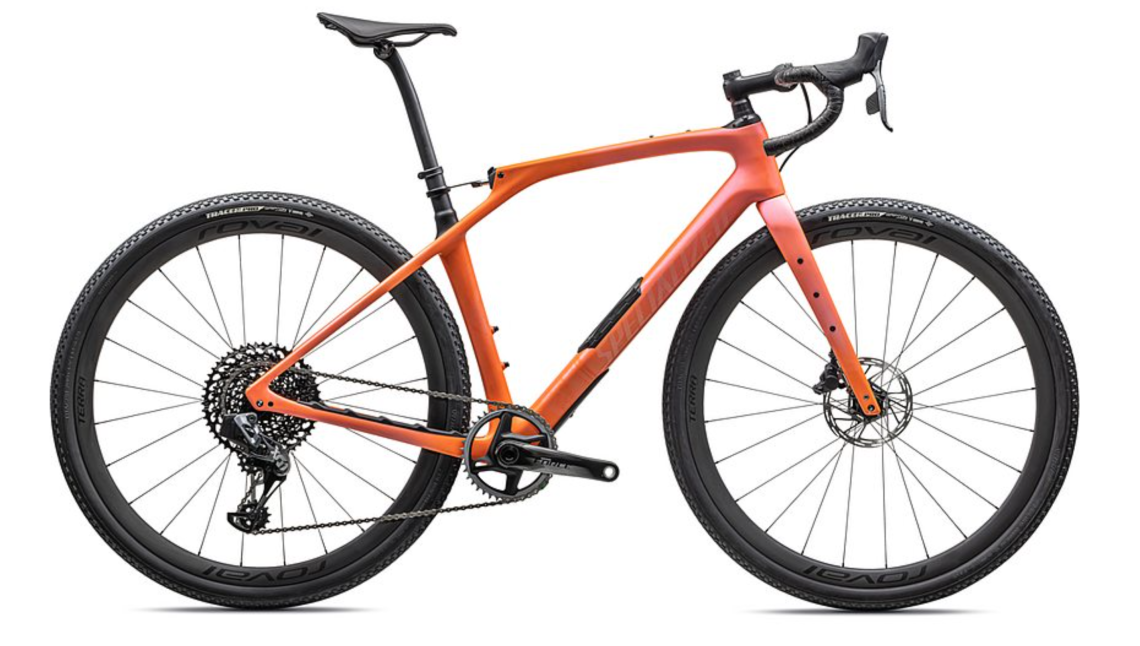
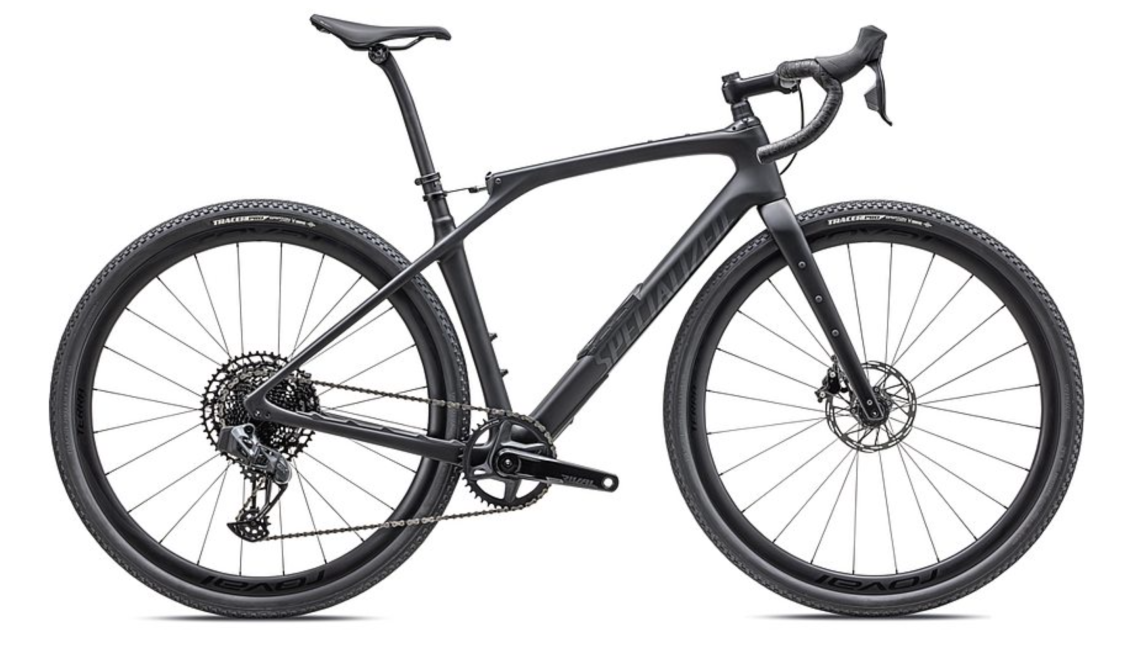
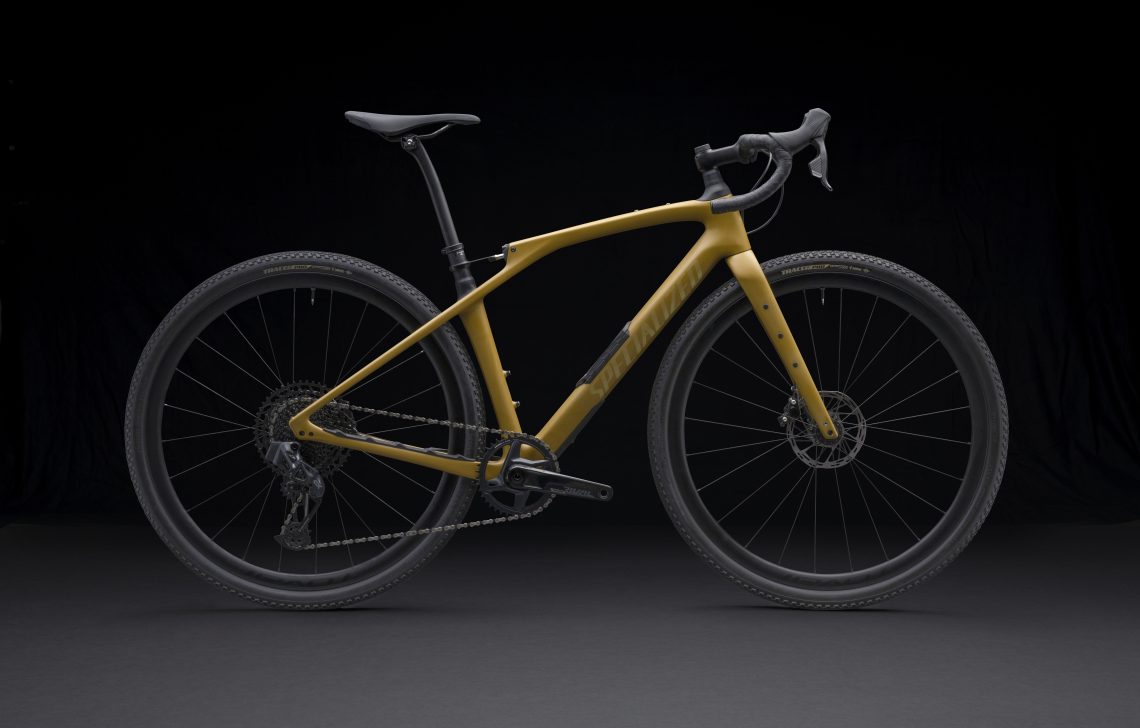
The current Diverge model will still be available for purchase, albeit with different features. Moreover, Specialized won’t be offering an S-Works model with just the Future Shock Front 2.0 system anymore. Instead, there will be two more carbon variants, one with and one without the SWAT box. There will also be two alloy versions called the Diverge E5, one with Future Shock Front 2.0 and both without the SWAT box.
The new Specialized S-Works Diverge STR 2023 – first ride review
Enough of theory! How does the new S-Works Diverge STR 2023 fare in real life? As soon as you swing your leg over the saddle and start pedalling, you realise that this bike is different from everything else you’ve ridden before – and the Rear Future Shock really makes a huge difference! That being said, it took us a while to find the optimal setup. Like with conventional mountain bikes, it’s crucial that you tune the suspension of the S-Works Diverge STR 2023 to suit your needs and preferences before you set off.

Initially we followed Specialized’s recommendations for a rider weight of 70 kg and frame size 54, but this was clearly too soft for our liking. After swapping the FP2 frame post with 35–43 stiffness degree for the harder FP3 variant (40–48), we settled for the 48 position, which is about 37% stiffer than Specialized’s recommendation. Fortunately, the bike comes standard with two frame posts with different stiffness degrees, so you can try out different combinations. Like with conventional mountain bike suspension, finding the right spring stiffness is key, because using the wrong spring rate will prevent the system from working as it should.

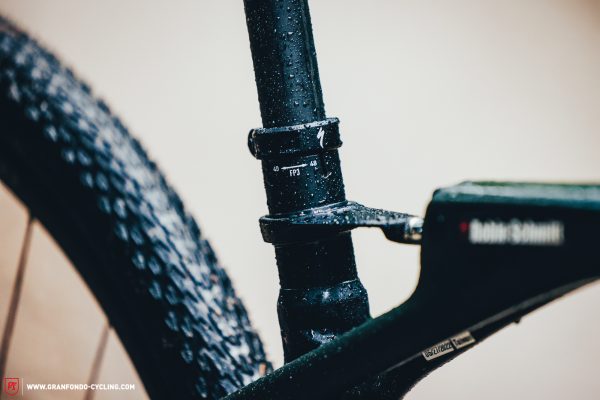
Once the suspension system is properly tuned, you’ll have to get used to the new riding experience, which is nothing short of a magic carpet. Alright, we’ve never really flown with Aladdin, but that’s what it must feel like. The Rear Future Shock works efficiently, neutralising the vibrations of chunkier gravel and small bumps while at the same time preventing bigger impacts from travelling straight into your back, thus significantly reducing fatigue on longer rides.
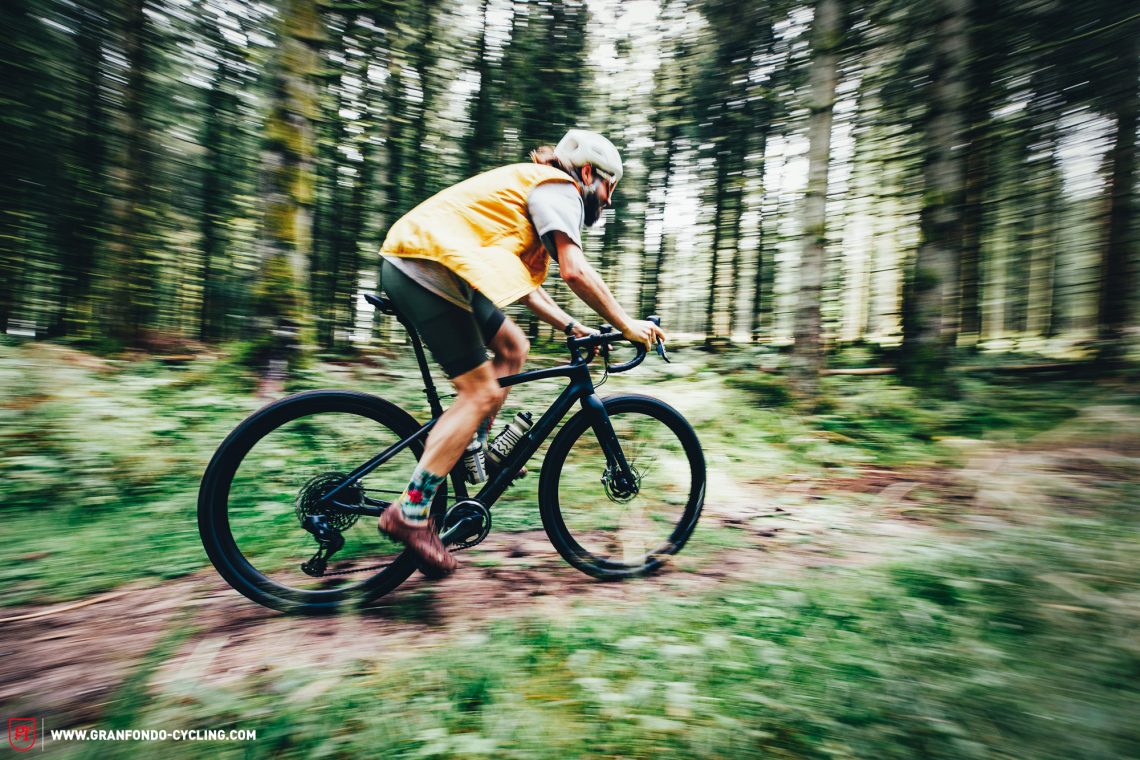
When riding on rough terrain, the S-Works Diverge STR 2023 requires you to adapt your riding style, because the system only works when seated! Experienced riders who would instinctively stand up on the pedals to negotiate nasty root carpets onboard a rigid gravel bike, will have to force themselves to sit down – and wow – if you do, you realise that the system really works! With bigger obstacles, however, the rear wheel still tends to bounce, but this is inevitable and, after all, an active MTB suspension system still has a clear advantage on rough terrain. However, the Diverge STR wasn’t designed for this purpose in the first place. At the press camp in Baiersbronn, we kept clear from singletracks and rode almost exclusively on gravel paths and forest double tracks. There are gravel bikes with dropper post, wider cockpits and more downhill-oriented geometries that are far more capable off-road and even try to hold up with mountain bikes.

Even with the rear suspension system, the Diverge STR retains its original character, ensuring a high level of comfort with its well-integrated riding position while at the same time striking an excellent balance between agility and composure, both on fast descents and through corners. The Diverge STR is precise but has become even more composed on descents thanks to the Rear Future Shock, allowing you to actively push the bike into corners to increase traction on both wheels.
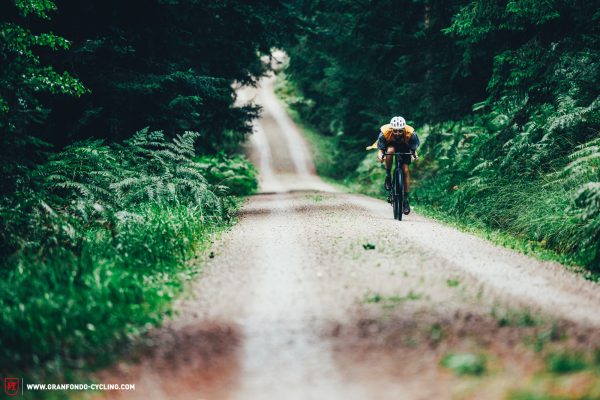

When you turn off onto the tarmac and challenge your riding buddies to a town-sign sprint, the Diverge fully exploits the advantages of its stiff bottom bracket area and accelerates just as willingly as its predecessor without the Rear Future Shock. In addition, with a simple flick of the compression lever on the shock, you can increase suspension activity even further while riding. Provided you’re seated, this reduces both the sensitivity and degree of deflection, thus providing a much stiffer ride – which can be a true godsend on smooth tarmac. And while we’re generally big fans of the Specialized Power Pro Mirror saddle, on our test bike it was too soft in combination with the Rear Future Shock, resulting in vague handling in some scenarios, for example when riding with no hands.


On steeper climbs, it makes sense to slide slightly forward on the saddle to distribute the weight more evenly across the bike. The increasing slope gradient changes the weight distribution, and with it the forces that act on the suspension, both at the front and rear. If you don’t shift your weight, the Rear Future Shock tends to sag a little, reducing weight on the front end and allowing the front wheel to lift off the ground more easily.
Wireless drivetrains, front and rear suspension, the handy SWAT box and replaceable seat tubes with several moving parts – the days of simple, maintenance-free gravel cruisers are over! The complexity of drop-bar bikes is constantly increasing, which can be fascinating and fun, but also requires a little more thought, foresight and care. Are the batteries charged? Are the moving parts clean, and which ones should be lubricated? While the Specialized S-Works Diverge STR clearly has its qualities and advantages, it will inevitably split opinions in the gravel world and make for exciting post-ride pub discussions.

Who should take a closer look at the new Specialized Diverge STR 2023 and who should forget about it?
If you got to this point of the review, you might understand why the new Diverge STR isn’t necessarily the bike of choice for two-wheeled adventurers who want to embark on a self-supported cycling expedition around the globe. And if you expect the Diverge STR to be a gravity gravel ripper for epic singletrack shredding, you might want to look elsewhere too. While the suspension of the Diverge STR significantly increases the level of comfort and helps reduce stress on the body, it doesn’t really improve the bike’s trail capabilities. Instead, we should look at Specialized’s drop bar full-susser as a high-tech gravel bike that offers noticeable advantages for both beginners and experienced riders, allowing you to adjust the level of comfort while at the same time inspiring more confidence and ensuring more and sustained riding fun. The suspension system has virtually no negative influence on the sportiness and efficiency of the Diverge STR and also makes it a great bike option for long rides and bikepacking expeditions, together with the mounting points for bags and integrated SWAT box. However, like with conventional mountain full sussers, finding the right spring rate is key with the Rear Future Shock!
The Specialized S-Works Diverge STR 2023 combines different worlds. It blends the road capabilities and sprinting qualities of a gravel bike with a newly developed suspension system, offering an innovative and captivating overall package that would make Aladdin’s flying carpet jealous. With its comfortable yet sporty character, polarising look and sophisticated, fully customisable suspension system – which only adds marginal weight and doesn’t seem to affect the efficiency of the bike – Specialized’s gravel full susser really knows how to impress. The new S-Works Diverge STR is the right choice for all riders who want to go further, higher and for longer – provided they can fork out € 15,000!
Tops
- Innovative and customisable suspension system
- Unique ride feeling, high level of comfort
- Rear Future Shock offers advantages both for pros and inexperienced riders
- Clever frame features like the SWAT box
- Good sprinting qualities
Flops
- Damper can’t be serviced and has to be exchanged
- High complexity of the system

Did you enjoy this article? If so, we would be stoked if you decide to support us with a monthly contribution. By becoming a supporter of GRAN FONDO, you will help secure a sustainable future for high-quality cycling journalism. Click here to learn more.
Words: Mike Hunger, Robin Schmitt Photos: Etienne Schoeman, Robin Schmitt, Peter Walker



